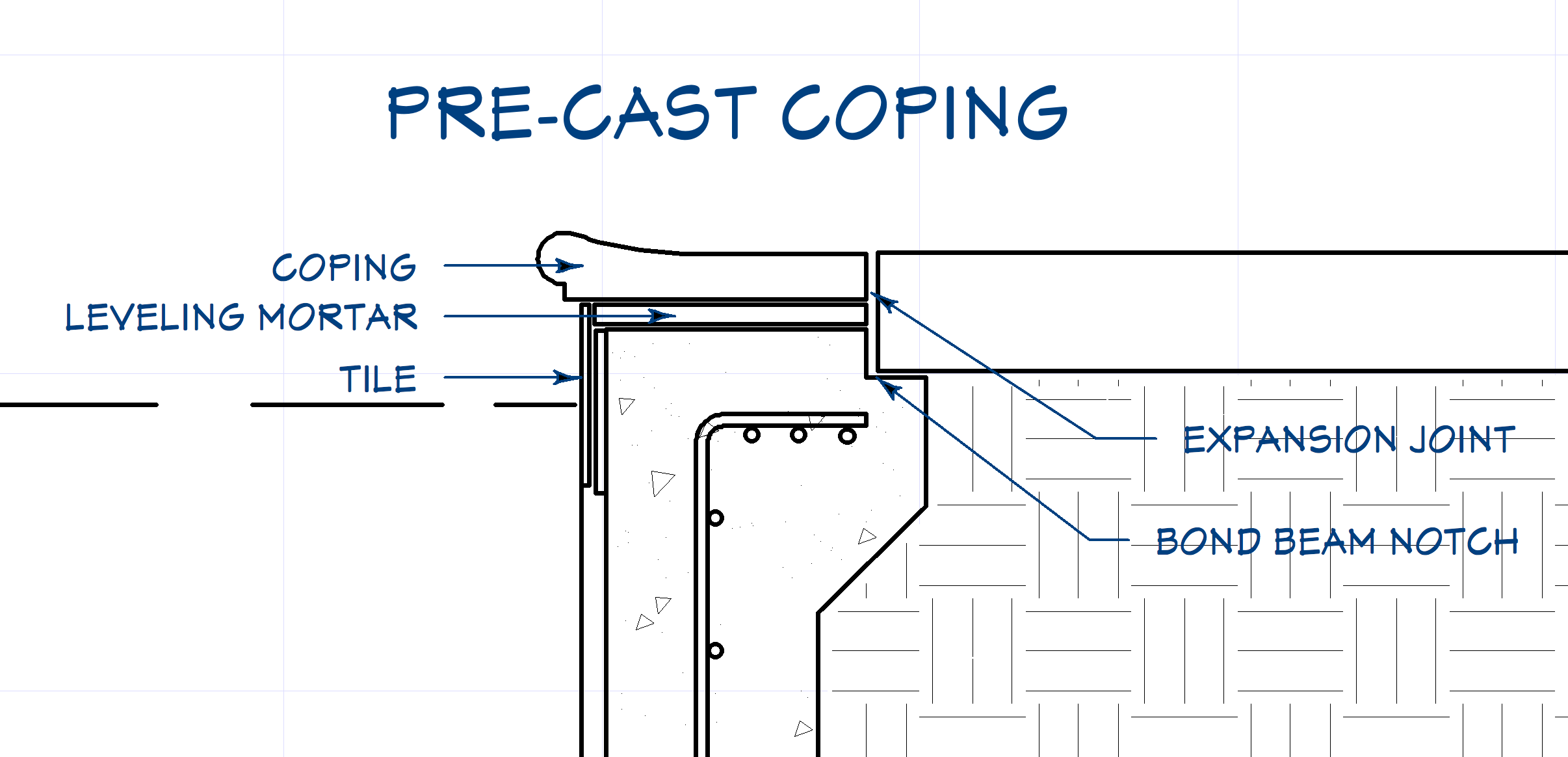Hi all -
About to order my coping after getting shotcrete last week.
I have what I think is a silly question but I haven’t seen addressed before… If my bond beam is 12 inches wide, does it matter if I choose a 12” or 16” coping? The 12” coping will be completely covered on the bond beam (with the 2” of overhang in the pool), and the resulting other pavers that will butt up to it will also be resting on the last 2” of the beam (I know not to secure it so the patio can float).
But the 16” coping would overhang 2” past the bond beam. Is that kosher and can be filled with compacted substrate prior to laying down the paver behind it?
Which would you choose?
About to order my coping after getting shotcrete last week.
I have what I think is a silly question but I haven’t seen addressed before… If my bond beam is 12 inches wide, does it matter if I choose a 12” or 16” coping? The 12” coping will be completely covered on the bond beam (with the 2” of overhang in the pool), and the resulting other pavers that will butt up to it will also be resting on the last 2” of the beam (I know not to secure it so the patio can float).
But the 16” coping would overhang 2” past the bond beam. Is that kosher and can be filled with compacted substrate prior to laying down the paver behind it?
Which would you choose?






